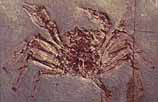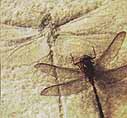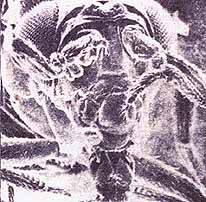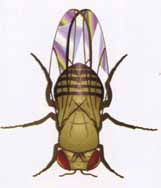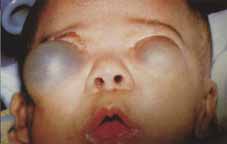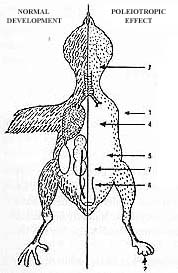— THE EVOLUTION DECEIT —The basic idea of the Theory of Evolution which claim that all the living things originated from common ancestor, was first stated by a French Biologist, Georges de Buffon, in the middle of 18th century. According to Buffon, the living things were subject to a constant change and consequently new species could be formed from a single species. Buffon, also calculated the time span necessary for the transformation of one species into another. Based on his ‘discovery’, he estimated the age of the earth to be 80 thousand years. A reply to this first assertion soon came from England. An ambitious researcher called Erasmus Darwin- Grandfather of famous Charles Darwin- developed the idea of Buffon and laid out the first basic proposals of the thought which we today regard as the theory of evolution. According to Erasmus Darwin, the organisms were not created as different species. On the contrary, they all originated from a single ancestor by mutating and varying when necessity. The third big step was taken again in France after Erasmus Darwin. French Naturalist Jean Baptiste Lamarck pronounced the first comprehensive theory of evolution in the beginnings of the 19th century. Lamarck explained the mechanism of evolution as ‘transferring the acquired characteristics from one generation to another.’ Hence, the changes that the living things go through were perpetual and could be inherited to the next generations. He justified it with the well-known giraffe example; according to him, giraffes were antelope-like animals, however, the effort to reach high tree branches caused their necks extend in time. Lamarck, strongly believing in his theory, was quite assertive. He claimed that a breed whose arms are cut successively would result in armless generations. For Lamarck, the origin of human beings must have been the apes. An ape with four legs, which lost its ability to climb, could have been transformed into human beings as a result of adaptations through generations.
However, those who had the mission of imposing people to reject creation were to find another theory soon, which was more flexible than Lamarck’s. The theory, which had the same reasoning, yet was easier to support because of its "softer evolution mechanism"; was Darwinism.
However, while proposing his claims, Darwin was unaware of the science of genetics just like Lamarck . While the echoes of Darwin’s book were going on, Austrian botanist, Mendel discovered the laws of inheritance. Mendel’s discovery gained importance in the beginnings of 1900 after the emergence of the science of genetics. In the beginning of 20th century the structure of chromosomes and genes were discovered. These developments, in fact, refuted the "long argument" of Darwin's, just like Lamarck’s. Yet, Darwin’s theory was ‘flexible’. Since he did not put forth a solid evolutionary mechanism, it was possible to continue with his theory with new additions and arrangements. Consequently, his followers behaved as such. The theory of evolution, which had become out of fashion with the exposition of genetics was revised and in 1940 " theory of synthetic evolution" was introduced. According to it the source of variations in Darwin’s theory was the mutations. Yet, this neo-Darwinism could not manage to save the theory of evolution. Each progress in genetics continued to refute Darwinism. The discovery of DNA in 1950 caused the theory to again suffer. The evolutionists were insistent. In 1970’s a new concept arose; "evolution with leaps". It was a serious deviation from classical Darwinism and no one could actually understood what it really was. Because, Darwin believed in evolution with stages. According to it a species could turn into another one gradually, step by step. The new model claimed that a species changed into another without any transitional forms. For example, the first bird in history could come out from an egg of a reptile. According to the same theory, carnivores living on land could suddenly turn into giant whales by mutation. This new concept concerning evolution with leaps, was a result of a new imagination, a fantasy. Yet, some scientists took it seriously. They had to, because they could not find fossils to support the theory of Darwin. A slow change, as Darwin proposed, would lead into many creatures like half bird half reptile. However, no transitional form could be found in spite of the efforts. Evolutionists gave respect to this new concept to cover the failure of transitional forms. Yet, it was clearly sheer imagination. That’s why neo-Darwinism kept its popularity. Evolution with leaps was never accepted as a consistent theory, yet was used as a gate to escape when it was needed. Even today evolutionists have to take refuge under this imaginary model in order to explain eyes, wings or lungs. Again the result of the theory of evolution is neo-Darwinism. It is actually nothing new but only Darwin’s "long argument" that is put forward in his Origin of Species assisted by the theory of mutation . Today this synthetic theory is tried to be imposed on people in everywhere on the world. The model proposes that the source of evolutionary changes is the random mutations. Beneficial mutations are selected by natural selection and the living things evolve. According to this model, these changes even lead to a stage that the living things can change their species. This is how the organism promotes to a higher organisms. Neo-Darwinism, which is regarded as the theory of evolution today, has two mechanisms to answer what the power of evolution is; natural selection and mutations. The theory assumes the two as complimentary. The living things vary by mutations and the beneficial changes are selected by natural selection. As a result a new species is formed. When this theory is little bit examined no evolutionary mechanism is observed. Because neither mutations nor natural selection contribute to their claims.
Does "Natural selection" have an evolutionary effect?When Darwin proposed the theory of evolution, his major evidences were based on his own observations. Even today, it is accepted that the most important evidences of the theory are based on natural observations of the researchers, and not on experiments. To put it more clearly, what explains evolution are the hypothesis and the comments of the researchers. And these are always speculative.Since the theory does not rely on evidences, the process of evolution is explained in a tale-like manner. A typical sentence in such sources may be as follows: "First, single-celled organisms formed, then they clustered and formed the first cell colonies...etc." Yet, the theory of evolution does not question how these one-celled living things decided to come together to make a colony. It does not answer the key questions like why they made such a decision and, even if they might have made the decision, how they can be so perfectly organized. According to the theory, there is only one mechanism to answer such questions: Natural Selection. It is always the "magical natural selection" that formed the first single-celled organisms, let the eyes see, formed organs like hand, foot and ear and inspired the birds to migrate thousands of kilometers. The logic of natural selection in theory of evolution is as follows: The individual acquiring more developed mechanisms through the process of evolution becomes stronger and survives. Those, who do not have that chance are annihilated. Douglas Futuyma, who is the most prominent defenders of the theory of evolution by natural selection, published a book called The Biology of Evolution in 1986. The book is considered as one of the major sources for natural selection. The basic idea is that; the mutations (the alterations in the genetic code of the organisms because of some external effects) provide the organisms to obtain positive characteristics, and natural selection helps these characteristics to be selected and to spread. When evidences of Futuyma are inspected carefully, it can be seen that none of them proves that an organism is transformed into another. His three basic examples are as follows: 1- The resistance to antibiotics and some poisons which is developed
by bacteria and some insects. Let us examine them one by one: The resistance to antibiotics and some poisons, which is developed by bacteria and some insects, is one of the very few exceptional beneficial mutations. Yet it should be remembered that it is only an exception, and can not be used for the sake of the theory of evolution. When the genetic structure of the bacteria is inspected, it can be seen that their structure is suitable to undergo beneficial mutations contrary to other complex organisms. (However, as we will discuss in more detail, more than 99% of mutations are harmful) These organisms have such defense mechanisms since they interact with many chemicals due to the environment they live in. Moreover, even though the mutations of bacteria are beneficial, they will not help the organisms develop or change their species. Studies made on E.Coli bacteria which most frequently undergo mutations, refuted the thesis which implies that these organisms evolved by mutations and natural selection. E.Coli, which can divide once in 20 minutes, is one of the living things that produce fastest and that mutate the most. 50 years’ of studies on these bacteria prove that they never change their form by mutations. In those mutation experiments, the effects of heat, dryness, vacuuming, freezing, electrifying, high pressure and various chemicals are examined, and consequently it was seen that no new form came into being even under different environmental conditions. The number of bacteria obtained in 50 years is more than the number of an arbitrary animal species that is assumed to be living for 100 million years. If there had been a chance of shift to a new form by mutations, such change should have been observed in these bacteria which continuously mutated. Yet, none of the experiments show such an alteration. Second example given, is the immunity to malaria seen especially in Mediterranean races and assumed to result because of a mutation in a single gene. However, there is also another effect not mentioned by evolutionists: Those people who have the immunity, also have the disease called sickle cell anemia due to the harmful effect of the same gene. The disease caused by an error in the hemoglobin protein, which carry blood to cells, is recorded in the genes. Therefore, this exceptional situation regarded as ‘beneficial’ and is assumed to add a positive value, is a good example to show that the mutations are random and generally harmful. Rarely a useful mutation occurs causing other defections and disorders. The third example concerning the butterflies during the Industrial Revolution in Britain, which is used as an observable result of natural selection, is an insubstantial example as well. This "great evidence" of evolution is about the change in the colors of the butterflies living in Britain. As it is told, during 1850’s, at the beginning of the Industrial Revolution, the color of the trees around Manchester was quite light. Therefore the moth living on those trees can easily be noticed by the birds that feed on them and therefore they have very little chance to survive. 50 years after the Industrial Revolution, because of pollution the crust of the trees became darker and this time the moth with light color are noticed and hunted by birds. As a result, the number of the light colored butterflies decrease whereas the dark colored ones increase. This situation which is frequently used by the evolutionist as the evidence of evolution by natural selection, is quite clear that it cannot explain such a claim. Dark colored butterflies already exist in the butterfly population before the industrial revolution. In other words natural selection did not make a new form that had not existed before. No new information was added to the genetic information. Therefore, it was impossible to gain a new characteristic or an organ which would result in a new form. In order to have a butterfly turn into a new form, a bird as an example, new additions to the genes and mathematical programs that will make the new vital systems are required. Since mutation do not make additions to genes, it is impossible. The invalid there examples of evolution based on mutations and natural selection results as: This mechanism does not have characteristics to add a new organ to a living organism or change it into another organism. The greatest evidence since Darwin is not anything than the butterflies in Britain. Pierre Grasse, French zoologist and famous ideologue of evolution finishes his book named Evolution in Living Organisms as:
Effects of MutationsIn the pervious pages we have stated that Neo-Darwinist theory presented natural selection as a process driven by mutations. The first part of this mechanism, natural selection, does not work as we have seen. Now let us look at mutations closer.Mutations can be defined as breaks or replacements in the genetic
information. They effect the DNA in the cell core and damage it. Each
agent causing mutation is called as ‘mutagenic factor’. Mutagenic
factors are usually chemical effects or particle radiation. When DNA and its structure is examined it is seen that such random occurrence can only damage this fragile mechanism. This is why mutations can not have the power to evolve and develop organisms. Researchers in the field approve it. B.G. Ranganathan comments as such:
SOME EXAMPLES OF HARMFUL MUTATION
We can summarize why mutations can not support the theory of evolution, in four headings: 1- Mutations are harmful. Since they occur randomly, they almost always damage the organism. Any unconscious impact on a perfect and complex structure will lead to destruction, not to improvement. In this respect, mutation in an organism is similar to, taking a microchip out of its place and throwing it away or mounting it to somewhere else in a computer. This only gives damage to the computer, not any benefit. This is just like how the mutations are; they seriously harm the genetic material. 2- As a result of mutations, no new additions are made to the DNA. Mutations can only tear or change the places of the existing genetic material. Therefore mutations can not produce new organs or characteristics for the organism. 3- Complex organs like the brain, eye or the reproduction organs, or characteristics like symbiosis or camouflage can unquestionably not be explained by mutations. It is illogical to claim that nearly forty organs from the retina to the eyelids which constitute the eye, can result because of mutations. In order for an eye to perform its function, all of its parts must exist concurrently and this is impossible by any spontaneous occurrence and without any conscious interference. 4- Mutations has to be in the hereditary cells in order to be transferred to the next generations. Changes in any somatic cell or any organ other than hereditary cells are not transferred. For example, the eye may mutate and change due to radiation or some other external effects, but this change will not be carried to the descendants. To understand the effects of mutations, it is necessary to conceive the complexity of the systems and mechanisms of the living things. Even the single-celled organisms which can be regarded as the simplest form of living things, have perfect and specialized structure. Any simple cell has the capacity to produce energy, defend and feed itself and to reproduce. Any random interference in this perfect structure will inevitably cause its spoil. For example, any external effect on DNA, leads to erroneous synthesis of proteins. DNA can be considered as a template and the proteins are synthesized according to this template of the DNA. Any change on this template will naturally result in the change of the products that are produced out of this template. Whenever the DNA replicates itself, every new cell will carry the same erroneous genetic code. The proteins that are produced by this faulty DNA will not be able to
perform their vital functions. When we examine the structure of the
proteins, we can observe its complexity and it can be seen that
technically it is only the damage that any smallest modification may
induce. For example, if the protein called "oxyhemoglobin" cannot perform its task, then no oxygen can be transported to the cells and consequently the man will die because of lack of oxygen in the cells even if he can breathe. The most important proof on mutations to lead only to destruction, is the process of genetic coding. Almost all of the genes in a developed living thing carry more than one information. For instance, a gene may control both the height and the eye color of that organism. Microbiologist Denton explains this characteristics of genes in higher organisms like human beings, as such:
SOURCE: http://www.harunyahya.com/evolution_introduction.php (Note: I do not endorse the Muslim religion, but the information published here is very truthful concerning the evils of evolution. —David J. Stewart) Previous | Contents | Next |
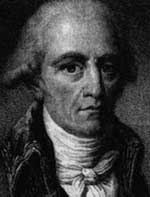
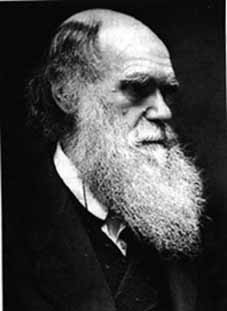


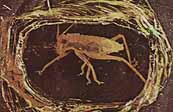
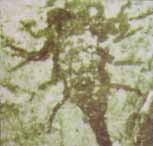 Scorpion
fossil of 230 million years (Nature, March 1985)
Scorpion
fossil of 230 million years (Nature, March 1985)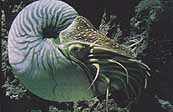 There is a 450 million year old fossil of Nautilus
There is a 450 million year old fossil of Nautilus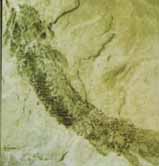 350-400
million years old fossil of Coelacanth fish
350-400
million years old fossil of Coelacanth fish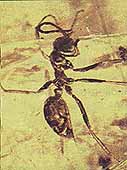

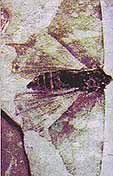


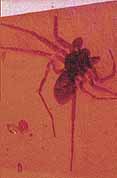 A
spider of 100 million years trapped in ambergris
A
spider of 100 million years trapped in ambergris 
